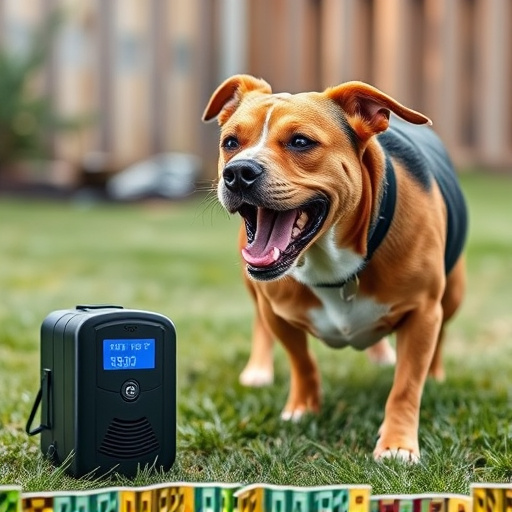Ultrasonic dog repellents offer a humane, effective alternative to traditional stationary or mobile options, using inaudible sound waves to deter dogs without causing harm. Stationary units excel at targeted training in specific areas like homes or cars, while mobile devices provide versatility for outdoor use. Safety is paramount; ultrasonic devices should be chosen based on dog size and temperament, with adjustable settings and positive reinforcement techniques for effective training. In the Stationary Vs Mobile Dog Repellent Comparison, understanding each type's strengths helps cater to diverse environments and canine behavior needs.
“Discover the revolutionary world of safe dog training with ultrasonic technology—a game-changer in pet care. This article delves into the inner workings and numerous benefits of these innovative devices, offering a non-violent approach to canine behavior modification. We explore the classic stationary vs. mobile dog repellent comparison, highlighting pros and cons for each.
Learn about safety considerations and best practices to ensure effective and secure training while harnessing the power of ultrasonic waves.”
- Understanding Ultrasonic Dog Repellents: How They Work and Benefits
- Stationary vs. Mobile Devices: Pros, Cons, and Application Scenarios
- Safety Considerations and Best Practices for Using Ultrasonic Dog Training Technology
Understanding Ultrasonic Dog Repellents: How They Work and Benefits
Ultrasonic dog repellents have gained popularity as a humane and effective way to deter unwanted canine behavior, such as barking or aggression. These devices emit high-frequency sound waves that are inaudible to humans but can be irritating to dogs. Understanding how they work is essential when considering their benefits over traditional, stationary dog repellents. In contrast to mobile options, which a dog may learn to ignore over time, ultrasonic repellents rely on consistent activation and target specific behaviors through the use of varying frequencies and tones.
One significant advantage is their versatility. They can be used indoors or outdoors, offering flexibility for different environments. Additionally, these devices are generally considered safe, as they do not involve shock or force but rather take advantage of a dog’s sensitive hearing. This makes them ideal for training purposes, helping dogs associate certain behaviors with an unpleasant sensation without causing physical harm.
Stationary vs. Mobile Devices: Pros, Cons, and Application Scenarios
In the realm of safe dog training, ultrasonic technology offers a innovative approach to behavior modification. When it comes to stationary vs. mobile devices, each has its unique advantages and application scenarios in the context of a Stationary Vs Mobile Dog Repellent Comparison.
Stationary devices are typically more powerful and consistent in emitting high-frequency sound waves, making them ideal for targeted training in specific areas like houses or cars. They offer continuous protection without the need for constant manual operation. However, their limited mobility restricts their use to fixed locations. In contrast, mobile ultrasonic dog repellents provide versatility, allowing users to move and adjust the device as needed, suitable for outdoor settings or during walks. While potentially less powerful than stationary models, they offer convenience and flexibility in various training scenarios.
Safety Considerations and Best Practices for Using Ultrasonic Dog Training Technology
When considering ultrasonic technology for dog training, safety is paramount. Unlike traditional shock collars, ultrasonic devices emit high-frequency sound waves that are inaudible to humans but can be effective in deterring unwanted behaviors. However, not all ultrasonic trainers are created equal. It’s crucial to opt for a device designed specifically for canine use and with adjustable settings to tailor the intensity according to your dog’s size, temperament, and sensitivity.
When using these devices, best practices dictate consistent and positive reinforcement training methods alongside the ultrasonic signal. Avoid prolonged or frequent usage as excessive exposure may cause distress in some dogs. Additionally, a stationary vs. mobile dog repellent comparison should favor static placement near problem areas rather than constant movement across a large space to prevent overstimulation and maintain effectiveness. Always monitor your dog’s reaction and consult with a professional trainer for guidance tailored to your pet’s unique needs.
Ultrasonic dog training technology offers a safe and effective approach to modifying canine behavior. By understanding how these devices work and considering both stationary and mobile options, pet owners can make informed decisions. A stationary ultrasonic repellent might be ideal for specific areas like cars or kitchens, while mobile devices provide versatility for outdoor training sessions. However, safety is paramount; always follow best practices and ensure the well-being of your dog during training. When used responsibly, this technology can enhance your bond with your furry friend and create a harmonious living environment.
